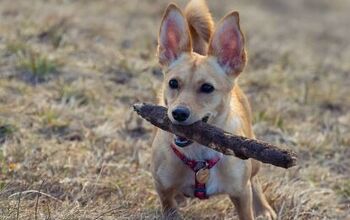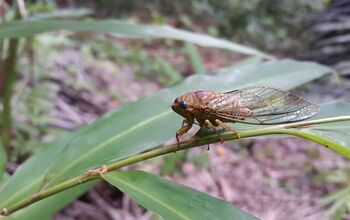Airedale Terrier


About Airedale Terrier
Of all the terriers, there may be none that so embody what we imagine this type of dog to be than the Airedale Terrier. An authentic English terrier finds its home in a specific place – Airedale, of all places – but is just as happy to make its home with and your family. Like many terriers, you will find that this dog is capable of a lot of love, a lot of companionship, and can even make an excellent playmate. Its overall attractive coat is hard to resist for the younger members of your family and you’ll find there’s nothing quite like petting a terrier. There’s a reason, after all, they call Airedale Terriers the so-called king of terriers.
But is the Airedale Terrier for you? Depending on the type of “dog person” you are, your answer will vary. Each dog breed has its own strengths and weaknesses, and these strengths and weaknesses mean specific breeds can be more suitable to certain types of dog owners. As we learn about the Airedale Terrier, we’ll also learn about the terrier group as a whole and hopefully you’ll just find a little something out about the types of dogs you’d prefer to bring home. Let’s find out more about the Airedale Terrier.
Like many terriers, you will find that this dog is capable of a lot of love, a lot of companionship, and can even make an excellent playmate.
Like many terriers, the Airedale Terrier hails from the British Isles – England, specifically. Many people hypothesize that the Airedale Terrier comes from the Aire valley in England, which obviously lends itself to the dog’s name – although names can be deceiving, particularly if the wrong one catches on. Since the Airedale Terrier’s history, like many other breeds, is focused on the 19th and 20th centuries, when it started gaining recognition, we can safely say that this breed did probably arise out of that region in England.
How were they bred? They were bred as jacks-of-all-trade, able to provide both companionship, a keen hunter’s instinct, and have developed a sporty, active demeanor. The first Airedale Terriers – or at least their ancestors – were not very similar to the Airedales that we see today. This makes this specific breed a relatively recent development in the world of terriers.
The Airedale Terrier’s pedigree obviously comes from a number of working terriers native to places like northern England. Specifically, we know that Otterhounds and terriers now known as Welsh Terrier s were bred in order to develop the Airedale. This means that if you went too far back in your time machine, you wouldn’t be able to spot anything really resembling the Airedale Terrier that we know today, save from a few distant cousins.
Terriers have their root in hunting activities, and while they might not be the main attraction like a retriever or a pointer might be, the terrier did serve a purpose and was happy to fulfill its duty alongside the team. You can find this friendly, eager-to-please demeanor in a number of terriers today, and we dare say that the Airedale Terrier is one of the breeds that will be eager to join your team.
They were bred as jacks-of-all-trade, able to provide both companionship and a keen hunter’s instinct
The Airedale Terrier can be deceptively light, which means their frame can put on the pounds if you’re not careful about their diet and exercise. Regular discipline with exercise and a steady diet of lean meats and good whole ingredients like vegetables will provide all the nutrition your Airedale Terrier needs.
Airedale Terriers are known as quick learners, which mean they’re actually relatively smart. This is a good thing, of course, but it comes with easy boredom. If you’re the kind of person who wants a dog to lounge around the house with them, this probably isn’t the dog for you. Airedale Terriers like to be challenged and can handle a surprising amount of training. Making sure that these dogs learn obedience from a young age is a priority.
Weighing in the 40-50 pound range, these athletic dogs can actually look a little heavier than they really are thanks to a coat that naturally hangs off their torso. Be sure you understand your Airedale Terrier’s weight and that you’re able to handle exercising with them on a regular basis.
Intelligent dogs prone to boredom, you’ll find that Airedale Terriers are great matches for you if you are similarly prone to boredom. If you like a lot of challenges and hate the idea of a routine, the temperament of an Airedale Terrier might be exactly the type of temperament for you. If, on the other hand, you’d prefer a lap dog that knows how to relax on the couch, this probably isn’t your breed.
Like many medium-to-larger dogs, Airedale Terriers can experience hip dysplasia. The leading killer of Airedale Terriers is cancer.
A range of around 10-13 years can be expected, with an average of around 11 years or so. This is normal not only for dogs of its size, but dogs in general. With a healthy, active life and a stimulating environment, your Airedale Terrier should be able to live a good, long time.
Airedale Terriers are known as quick learners, which mean they’re quite smart.
Regular walking and play is recommended – and, in fact, regular discipline with exercise should be considered mandatory for dogs of this size. They can handle a lot and love getting outside and exploring their agility and instincts.
The American Kennel Club refers to this breed’s reputation as the undisputed king of terriers. Not a bad reputation to have.
Expect a hard and stiff coat – this certainly isn’t a toy dog that was designed for petting. The coat does look attractive, however, and typifies the coats of many terriers.
Raising an Airedale Terrier from a young age will require effective obedience training. This isn’t really a “training wheels” type of dog that’s easy to train. They’re not necessarily aggressive, but they can easily get bored, which means they can easily get bored with your training. Patience and persistence will be necessities.
Photo credit: Dmitry Kalinovsky/Shutterstock

Amy Tokic, Editor of PetGuide.com, is a passionate animal lover and proud pet parent of Oscar, a Shih Tzu/Chihuahua cross, and Zed, a Japanese Chin. Her love of animals began in kindergarten, when she brought her stuffed dog Snoopy into class with her every day. Now, she writes about her adventures in pet ownership and tirelessly researches products, news and health related issues she can share with other animal enthusiasts. In her free time, Amy loves perusing used book and record stores, obsessing over the latest pet products available and chasing squirrels with wild abandon (a habit attributed to spending too much time with her pooches).
More by Amy Tokic

























